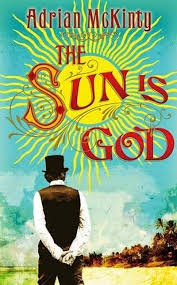The Sun is God – Murderous Mischief and “Cocovores” in the Kaiser’s old Pacific Empire
Posted: July 27th, 2014 | No Comments »A bit of a deviation this but an interesting one I think. I’ve recently blogged about Jonathan Fenby’s e-book The Siege of Tsingtao and my own Betrayal in Paris, both part of the Penguin China World War One Series. One thing a lot of reviewers and readers have asked is about why Germany was in Tsingtao and what was this German Pacific Empire of theirs?
Well, the Germans of course were late comers to colonialism and need to scramble to grab some bits and pieces. German East Africa is perhaps better known and remembered but, from the 1860s, the Germans showed an interest in the the Samoan Islands and the unexplored north-east quarter of New Guinea with adjacent island territories. To be honest they didn’t do much with these places – too remote, inhospitable, plain uninteresting. But they did scramble for China to have a base for the Kriegsmarine in the Far East. Germany’s prewar colonies in the southern Pacific included German New Guinea and Micronesia (later incorporated into German New Guinea), Kaiser- Wilhelmsland, Bismarck Archipelago, Bougainville Island (all of which are now part of Papua New Guinea), Nauru, the Marshall Islands, the Mariana Islands (the present-day Northern Mariana Islands), the Caroline Islands (now the Federated States of Micronesia and Palau) and German Samoa (now Samoa).
Adrian McKinty’s The Sun of God is the true story of August Engelhardt’s cult that lived on the small island of Kabakon in New Guinea. Engelhardt’s cult had everything you’d expect from a German health cult – nudism, sun worship, odd dietary requirements (they termed themselves cocovores, living off coconuts and bananas and suffering malnutrition as a result!). According to Engelhardt – “Naked cocovorism is God’s will. The pure coconut diet makes man immortal and united with God.” So now you know.
However, there was apparently infighting and falling out and some unexplained deaths among the cultists in the early 1900s – hence the subject of McKinty’s book. The Sun of God is a great little trip into a side water of history that really hasn’t been swum in much.
It is 1906 and Will Prior is in self-imposed exile on a remote South Pacific island, working a small, and failing, plantation. He should never have told anyone about his previous existence as a military foot policeman in the Boer War, but a man needs friends, even if they are as stuffy and, well, German, as Hauptmann Kessler, the local government representative.
So it is that Kessler approaches Will one hot afternoon, with a request for his help with a problem on a neighbouring island, inhabited by a reclusive, cultish group of European ‘cocovores’, who believe that sun worship and eating only coconuts will bring them eternal life. Unfortunately, one of their number has died in suspicious circumstances, and Kessler has been tasked with uncovering the real reason for his demise. So along with a ‘lady traveller’, Bessie Pullen-Burry, who is foisted on them by the archipelago’s eccentric owner, they travel to the island of Kabakon, to find out what is really going on.

Leave a Reply